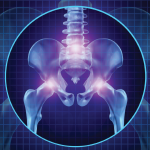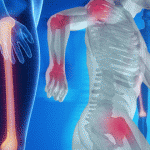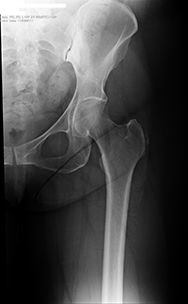
A 51-year-old man reported that he had been experiencing hip pain for the previous 18 months as a result of lifting a desk. He was diagnosed with hip bursitis and attained little relief with a trial of chiropractic care, three cortisone injections and physical therapy (PT) treatment consisting of modalities and soft tissue mobilization.1 Due to failed conservative treatment, radiographs were ordered to rule out fracture, degenerative joint disease or calcium deposition in soft tissues.2 They revealed a greater trochanteric calcific bursitis (see Figure 1).2
The patient refused surgery, which was recommended by the orthopedist, and he was referred to PT. The patient had been informed the calcifications were severe enough that removal of the bursa was the only treatment option available after failure of conservative treatment.3 Upon viewing the images, the physical therapist observed the extent of the calcification and identified a more isolated pathology than what was provided on the referral prescription (see Figures 2 and 3).
The Assessment & Treatment Approach
Subjectively, the patient was unable to sit longer than an hour, ascend stairs or sleep without nightly discomfort. Objectively, the patient had severe tenderness throughout his hip musculature, decreased tissue length and significantly weak hip abductors. Imaging explained why the hip abductors were weak and why the hip musculature was tender to palpation. This led to the decision to take a more active approach than his previous PT, with a focus on active assisted stretching, strengthening and functional movement training.
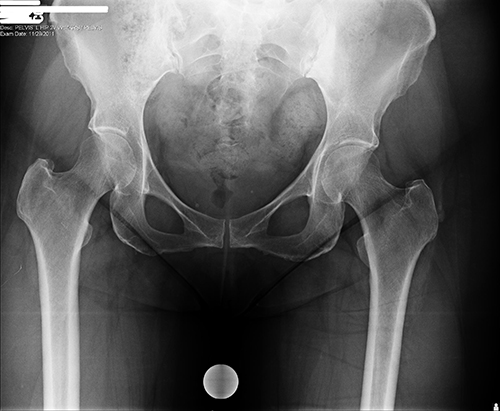
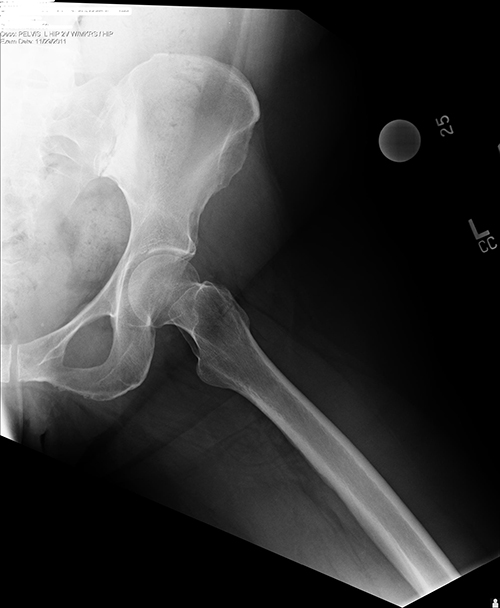
Outcomes
The patient was treated for eight visits over four weeks. He returned to premorbid activity levels and was independent with a home exercise program.
In summary, the radiographs provided his therapists with a detailed look into the pathology, which resulted in a more specific plan of care.

Alycia M. Markowski, PT, DPT, MPhySt (Manipulative), FAAOMPT, OCS, earned her BSPT and tDPT at Northeastern University and earned a masters in manipulative physiotherapy at the University of Queensland in Australia. Presently, Dr. Markowski is an associate professor in the Department of Physical Therapy, Movement and Rehabilitation Sciences at Northeastern University, Boston. Her research is presently focused on the use of diagnostic imaging technology and the scholarship of teaching and learning.
